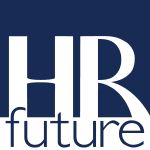In any modern workplace, the way information flows shapes how employees feel, function, and grow. When knowledge is organized thoughtfully, it does more than boost productivity; it reduces friction, supports engagement, and makes daily tasks feel less like a maze. This practice of organizing and delivering information with a purpose is known as information architecture.
Think of it as the blueprint for how your team accesses internal resources. Whether it’s an onboarding checklist, a benefits policy, or a shared project dashboard, the design behind these tools determines how smoothly someone navigates their job. When systems are fragmented or overloaded, confusion sets in. People spend too much time searching and second-guessing their decisions. Confidence dips, and so does efficiency.
Strong information architecture is not about perfection. It’s about creating clarity, so employees feel equipped to do their best work without unnecessary delays. When done well, it brings structure to complexity and helps companies remain nimble, especially during periods of growth or change.
Let’s explore how purposeful knowledge design supports daily work, drives collaboration, and keeps teams engaged.
Mapping the Employee Journey Through Information Access
Every touchpoint in the employee lifecycle depends on having the correct information at the right time. A new hire needs a clear roadmap to navigate those first weeks. A mid-career team member needs streamlined tools to complete projects. Someone preparing to transition out of a role needs an easy way to document their knowledge for the person taking over.
When systems are inconsistent or outdated, employees feel lost. They may ask for help repeatedly or rely on incomplete answers. These roadblocks create hesitation, even among high-performing individuals, and erode confidence over time.
To pinpoint where breakdowns occur, start by conducting an audit of your current knowledge flow. Where do employees go when they need answers? Are they finding what they need easily, or giving up halfway? Identify the biggest time-wasters, and ask team members directly where they feel stuck.
One way to enhance these pathways is by establishing an internal knowledge base that evolves in tandem with your organization. A well-crafted internal knowledge base enables employees to quickly move from question to answer, regardless of their department or location. It reduces the need for repeated questions and promotes more effective cross-team collaboration. When employees have confidence in where to find accurate, up-to-date information, they can focus more on doing meaningful work and less on figuring out how to get started.
Structuring for Scalability and Usability
Strong knowledge systems don’t just work in the moment, and they grow with the organization. Whether your team is 50 people or 5,000, the principles remain the same: clarity, consistency, and ease of access. The system isn’t doing its job if someone spends ten minutes clicking through menus or second-guessing document versions.
That’s why centralized, intuitive platforms matter. A single source of truth, cleanly designed and categorized, saves time and energy. It provides every team member, regardless of title or technical expertise, with the tools they need to work with confidence and effectiveness.
As your organization expands, the system should scale with it. That means anticipating complexity. Label content using terms your people use. Build pathways that match real tasks. Keep navigation simple. Design choices should align with both day-to-day work and long-term goals.
For HR teams aiming to lead this change, it’s worth viewing information architecture as a form of strategic planning. It’s not just about what’s stored, it’s about how access and clarity impact performance. Consider building systems that reflect effective knowledge management principles, where knowledge is not only collected but also refined, organized, and delivered in ways that support your organizational vision.
Addressing Bias in Knowledge Creation and Access
Not all information is equally represented in shared systems, and that’s where bias enters the picture. The decisions about what to document, who creates it, and how it’s labeled all influence who benefits. When these choices go unchecked, they can exacerbate inequities and exclude individuals from accessing critical knowledge.
For instance, if information about professional development primarily reflects the experience of one department, others may feel sidelined. If internal systems default to jargon or reference only one type of work style, some employees may struggle to participate fully in the process..
Identifying bias begins with reviewing what is in your systems and what is missing. Look at who’s contributing, which voices dominate, and which perspectives are underrepresented. Check whether the language is welcoming or subtly reinforces hierarchies or assumptions.
Tackling these gaps means inviting diverse input, revisiting tagging structures, and making intentional choices about how information is presented. Utilizing insights into information bias can help teams avoid cognitive shortcuts that limit the effectiveness of shared knowledge. The more transparent and inclusive your documentation is, the better it will support everyone on the team.
Democratizing Knowledge To Empower the Workforce
When knowledge is kept in silos, power and progress get bottlenecked. People end up waiting on one another for approvals, clarity, or access to essential information. However, when knowledge is shared freely and clearly, innovation accelerates. Decisions get better. Employees feel trusted to lead.
Knowledge democratization means giving all employees, not just those at the top or with institutional memory, equal access to the resources they need to thrive. This takes purposeful design, open sharing, and a mindset that values transparency over control.
Tools that support open documentation, cross-functional collaboration, and clear navigation help level the playing field, enabling a more equitable and efficient workflow. Practices such as regular system updates, multilingual support, and feedback loops allowing employees to flag confusing or missing content are also beneficial.
HR leaders can also track the equity of their knowledge systems by monitoring usage patterns, measuring access gaps, and soliciting employee feedback. These metrics help pinpoint who’s using the tools effectively and who might be left behind.
When knowledge is shared openly, your organization becomes more agile and responsive to change. Teams can solve problems more efficiently, eliminate redundancy, and collaborate with greater trust and confidence. Platforms that support knowledge democratization give employees the confidence to act and the insight to do it well.
Conclusion
Designing for information flow isn’t just an IT project or a content management task. It’s a strategic investment in your people. When your knowledge systems are thoughtfully built and regularly refined, they make every step of the employee experience more intuitive, inclusive, and empowering.
Now is the time to examine how information influences your culture. Start small by auditing one system and rebuilding one workflow, and then build upon that foundation. The payoff is a workplace where people feel supported, informed, and ready to lead.
Guest writer


























